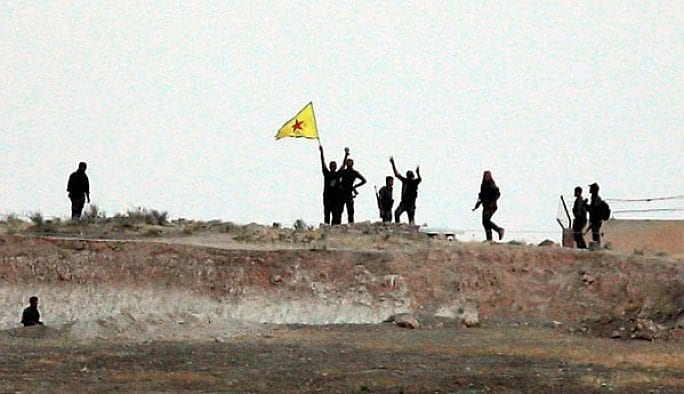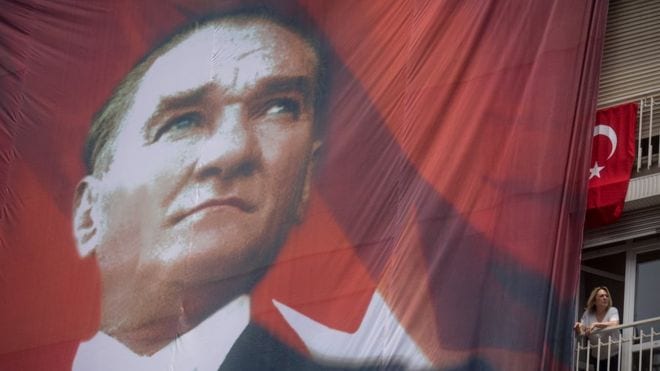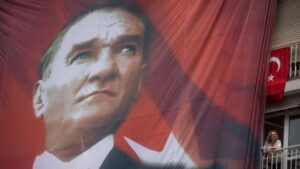by Sevgin OKTAY, The Light Millennium
NGO Representative to the United Nations Department of Public Information
“The first Amendment of the United States constitution does not protect freedom of speech that promotes hatred and for that matter incitement to kill. And yet, there are summer youth camps in this country where they incite young minds to harbor hatred and killing towards certain ethnic groups as can be found in some published books. The point was made that perhaps courts are not applying what the constitution provides.”
It was a pleasure for me to attend, as a Light Millennium NGO Representative to the United Nations Department of Public Information on Thursday, 25 January 2018, a Briefing about learning from the past through Holocaust remembrance and embracing certain values to help prevent such acts of terror from recurring in the future with an exact title of “Holocaust Remembrance: Diversity and Lessons to be Learned for Human Understanding“. The program was organized in collaboration with the United Nations Outreach Program which, by the way, I had come to know about when I had participated in the United Nations Institute & Research (UNITAR) “Workshop on Genocide Prevention and the Responsibility to Protect” back in January of 2014 as Vice President of the Poughkeepsie chapter of the World Affairs Council of America. I thought the Briefing was well prepared and the panelists conveyed their learned lessons by dissecting the complicated issues into a set of objectives which could be carried out effectively, namely:
- Preserving Holocaust memory;
- Combatting prejudices through educational missions; and
- Helping to secure justice and fair treatment for all
Ms. Hawa Diallo, made the Opening Remarks of the Briefing. Photos by: The Light Millennium
HIGHLIGHTS FROM THE BRIEFING:
The Briefing opened with Welcome remarks made by Hawa Diallo, NGO Relations & Advocacy Unit, followed by moderator Kimberly Mann, Chief, Education and Outreach Section.
Hawa Diallo began her United Nations career in 1987 with the Department of Public Information in New York. From 1992 to 1994, she served in two United Nations Peacekeeping Operations in Cambodia and Somalia. Upon her return to New York, Ms. Diallo joined the Office of the Deputy Secretary-General until moving to the United Nations Human Settlements Program (UN Habitat) in Nairobi, as an Associate Human Settlements Officer and later worked as a Partners and Youth Officer until moving to the Agency’s New York Liaison Office in 2010. In 2013, Ms. Diallo was appointed Public Information Officer in the NGO Relations Section of the Department of Public Information.
In her opening remarks, Ms. Hawa Diallo thanked, what she called “dynamic” NGO expert panelists, including: Ms. Evelyn Sommer, Chair, World Jewish Congress, North America; Sarah Kaidanow; David Michaels, Director, UN and Intercommunal Affairs, B’nai B’rith International; Jason Sirois, National Director, No Place for Hate initiative, Anti-Defamation League for their participating at this Holocaust Remembrance event and sharing their work here. She went on to say that it is important that we learn from the atrocities and holocaust that were experienced during the second world War and share lessons learned so that they may never be repeated. She encouraged using social media to spread the word. In fact, the whole Briefing may be watched on UN Web TV:
Ms. Kimberly Mann took over to moderate the rest of the session. According to her bio, she is Chief of Education Outreach in the United Nations Department of Public Information, where she develops the strategy for and oversees the implementation of global education initiatives, including remembrance of the transatlantic slave trade, Holocaust education, Model UN and other youth projects. From 2005 to 2015, Ms. Mann served as the manager of the Holocaust education program and she continues to represent the United Nations at the International Holocaust Remembrance Alliance. Ms. Mann joined the Organization in 1993, where she has held several positions, including Chief of Special Projects, Manager of the Messengers of Peace Program and Desk Officer for the United Nations Information Centers in Africa. Prior to this she worked in public relations and advertising and as a teacher.
Ms. Mann welcomed the panelists, the NGO representatives attending the Briefing as well as the visitors on the UN Web TV and she noted the other activities that were taking place at the United Nations that week, namely, Holocaust Remembrance and shared responsibility seminars. In this connection, she mentioned the overall theme reflecting the universal dimension of the Holocaust and accordingly the more than 150 holocaust Outreach educational activities taking place in the month of January across 38 countries. She stressed the importance of teaching our children the importance of standing up to inequality, hate and injustice recognizing that racism and injustice are only learned and for all to embrace diversity and build a common humanity in the general sense while at the same time pointing to the fact that recently there has been a rise in persistent denial of the holocaust and the spread of hate sites on the internet moving from the margins to the center stage. She also mentioned Secretary General António Guterres’ messages outlining the two duties of all those concerned towards mitigating these tendencies, namely: a) remembering the lessons learned from systematic attempt to eliminate the Jewish people during the Holocaust, and b) be every watchful of the dark clouds on he horizon: anti-Semitism; along the same lines, prepare to take action against the growing sect of Nazism.
Ms. Kimberly Mann is then invited Ms. Sarah Kaidanow, a granddaughter of two Holocaust survivors: Jerry and Ellen Kaidanow, to address the attendees. Sarah Kaidanow is the NGO youth representative for the Holocaust and Human Rights Education Center (HHREC) of Westchester. According to her bio, as an actress and writer, Ms. Kaidanow is able to help share her family’s Holocaust stories through her work. Most recently, Ms. Kaidanow produced a short film, featuring her grandparents, for HHREC. She has been involved with them for the past year and is encouraged by their work to bring Holocaust education into schools and communities which might otherwise have little resources for teaching the lessons of the Holocaust.
Ms. Kaidanow started with a video of her parents Jerry and Eilan Kaidanow talking about their experiences as Holocaust survivors. Their message was that every one of the survivors should come forward and tell the Holocaust story “one way or another” because- in freely interpreting their words- “those who do not read history are doomed to repeat it” as an ancient philosopher said thousands of years ago. Having said that, the survivor parents added that younger generation should carry their stories forward so that they be become witnesses to what happened and help preserve the stories forever from generation to generation. Ms. Kaidanow added that this then can be translated into Human Rights through the lens of Holocaust and applied to current events which in essence enables them to critically analyze the situation and actively pursue what can be done. That is, to put into practice in the current circumstances what they learned from their history classes. In other words, Ms. Kaidanow underlined as she put it, “learn from the past to protect the future.” She went on to state that workshops especially for the young are crucial in teaching how simple bullying may develop into genocidal acts if not checked. Activism to prevent such acts are essential, she pointed out. These approaches they teach at the Holocaust and Human Rights Education Center (HHREC) of Westchester, NY reaching almost 30,000 students by now, she added. She ended by shouting out to her grandparents and turning to the moderator and saying “So, thank you for helping me to carry on this obligation of this third-generation granddaughter to move forward with my survivor grandparents’ stories.” Moderator Ms. Mann commended her for her work and wished that more young people would follow in her foot-steps.
Next speaker was Evelyn Sommer, the Chair of the World Jewish Congress North America. In 1990, the American Section of the World Jewish Congress (WJC) elected Ms. Sommer as Chairman, a post she held until January 2007. During this period, she chaired the Plenary Assembly of the WJC in Jerusalem and represented the WJC at important international meetings such as the OSCE conferences on anti-Semitism in Berlin/Germany and Cordoba/Spain. Ms. Sommer is also the founding President of the Women’s International Zionist Organization (WIZO) USA and represented WIZO at the United Nations’ Economic and Social Council (ECOSOC) and its Commissions on Human Rights and on the Status of Women.
She started by telling the core mission of the World Jewish Congress since its inception in 1943, as being “to fight anti-Semitism, racism, racial intolerance and all kinds of hatred.” She then talked about having created a #WeRemember site on the internet where people who believed in the core mission was asked to take their pictures and post them with a sign “#WeRemember.” At the time when they created the site, they were shooting for 6 million people to post their pictures and to their astonishment there are now 250 million people carrying on with that core mission. Ms. Somers concluded her comments by showing a video of several survivors with ages ranging from the 90’s to one of age 113, if I remember correctly. That video was followed by another video which showed how an El Salvador diplomat Arturo Castellanos and a Hungarian businessman Gyorgy Mandel in Switzerland helped save 25,000 Jews from the hands of Hitler from 1938 to 1944. That act reminded me of the Turkish Diplomats in France and Turkish Consul General on the island of Rhodes helped save close to 75,000 Jews from the death camps of Germany during WW II.
Next speaker was David J. Michaels who is the Director of United Nations and Intercommunal Affairs at B’nai B’rith International, the world’s oldest Jewish humanitarian, advocacy and social action organization. Mr. Michaels has traveled extensively and met numerous senior government and faith leaders, among them Pope Francis, United Nations Secretary-General Antonio Guterres and King Abdullah of Saudi Arabia. His work and perspectives have been featured widely in international media and he has received several awards for his professional accomplishments. Mr. Michaels trained at the Office of William Jefferson Clinton, the Foreign Ministry of Germany, the Embassy of Israel in Washington, the International Fellowship of Christians and Jews, Ha’aretz, and the Conference of Presidents of Major American Jewish Organizations.
Mr. Michaels, grandson of a Holocaust survivor, started by giving a short history of B’nai B’rith going back 175 years or so. He said that B’nai B’rith had a role in the forming of the United Nations and has been very vigilant in taking concrete actions against all forms of racism. He described B’nai B’rith’s work under three categories:
Civil society and Humanitarianism & Building Bridges between Jewish and non-Jewish entities across the world;
- Preserving Holocaust memory; and
- Combatting prejudices through educational missions across the world and “Diverse Minds” program encouraging writing books about diversity and inclusion.
Mr. Michaels mentioned work in countries as diverse as Bulgaria, Romania, Middle East and a communal project in Cuba with emphasis on Bridge building. Then he concluded his remarks with a video showing some examples of books written under the auspices of “Diverse Minds.”
Last speaker was Mr. Jason Sirois. He is the Anti-Defamation League’s (ADL) Director of No Place for Hate®, where he oversees the implementation of the initiative in ADL’s 27 regional offices. Currently more than 1,600 schools participate in the No Place for Hate program across the United States. His biography states that Mr. Sirois’ objective is to expand this number to five percent of schools in the country by 2022. The program aims to create positive, sustainable change in a school environment in which students take the lead in developing a culture where respect is the norm. Mr. Jason has been a motivational speaker and trainer focused on addressing issues of bias, harassment, discrimination, and bullying in schools, communities and the workplace. His work has directly impacted millions of students and educators.
Mr. Sirois was introduced by moderator Ms. Mann by noting his important work in the area of creating positive and sustainable change in schools where students take on leadership in developing a culture of respecting diversity. Mr. Sirois started by mentioning the founding of the Anti-Defamation League back in 1913 “. . . to stop the defamation of the Jewish people and secure justice and fair treatment for all.” He noted that back then, the ADL had the insight to fight anti-Semitism through fighting all forms of bias. To go into that in a bit more detail, he talked about, what he called, Pyramid of Hate.
The pyramid consists of five layers or levels, the bottom level representing BIAS in all of its forms of stereotyping, ridicule, belittling jokes, bullying and so on, which when unchecked will result in the next level of ACTS OF PREJUDICE, then ACTS OF DISCRIMINATION, which evolves into ACTS OF BIAS-MOTIVATED VIOLENCE resulting in GENOCIDE.
Mr. Sirois went on to say that, when he presents this model, he is often asked at what level should one intervene, and he answers at every level. If any one layer or level is removed, the rest of the pyramid falls, especially the bottom two layers which represent education starting from kindergarten and upwards: in other words, to live by “Never Again.” Then Mr. Sirois discussed how education works with emphasis on Holocaust Education and equipped with words of action through an Institute, like rather than talking about the horrors of Holocaust, talk about resistance. The key is to empower students to take leadership roles to convey “No Place for Hate.” Mr. Sirois pointed to www.adl.org/edcucation-and-resources where more is taught along these lines. In the final analysis, the whole education boils down to where we are today, and what we are headed for.
Moderator Ms. Mann thanked all the panelists before opening the floor to questions. First question she asked Ms. Kaidanow as to how to get young people more involved in the type of education that the speakers have been putting forth. She answered by saying that, she representing the youth, can unequivocally say that millennials are really engaged in many areas. In trying to woo them to a particular area, they must be respected, and their interest captured through innovative presentations on the social media with well-designed subject matter embedded in music as mentioned before, even hip-hop if done cleverly and nice graphics to grab attention. Then David Michaels suggested making the social media interesting giving the example of “Milch” and it’s “I can’t keep quiet” music which apparently went viral. Then Ms. Sommers interjected that the digital media is a must for reaching the young people. She also gave the example of calling young leaders the title of “Young diplomats” where youth are given recognition by bestowing them with important responsibilities. Mr. Sirois added that the adult educators should be trained to treat the students not as leaders of “tomorrow” but leaders of “today.”
Then Queen Mother, Queen Mother Dr. Delois Blakely, (NGO Rep., Founder-President of The Future Foundation) -presumably well-known in the halls of the United Nations, but at least not to me since I had not met her before other than saying hello to her on the way to the auditorium– asked of Sarah Kaidanow as a millennial as to how to bridge the gap between what her daughter asks her about the “Holocaust” and the “Hellocaust” she has experienced as a black woman, I assume. Ms. Kaidanow answered by pointing to bringing to the attention of the youth the experiences of different groups, such as of the Holocaust survivors, and by implications I believe of the black people, through pod-cast, Facebook and other digital media.
Next a lengthy question was related to the treatment of Jews at various countries around the world, including Eastern European and Baltic countries and specifically to Ukraine. The moderator answered by noting that last year there was a program specifically directed to the educators of Ukraine teaching them about the Holocaust and how it should be taught to school children.
Remaining five other questions touched upon how to confront Hate and Hatred, especially in explaining to the youth within the context they are being propagated. The panelists answered by way of reiterating the various approaches they had talked offered in their talks before. For example, Mr. David J. Michaels referred to the work of the B’nai B’rith is doing in 50 countries around the world. Mr. Sirois referred to his model of Hate in stressing the education of people through the lens of Holocaust. One granddaughter of a Holocaust survivor asked how to preserve their stories. The Ms. Kaidanow mentioned that there was such a thing as “Safe-keeping Stories.”
Another questioner wondered about how to handle hate speech under the protection of freedom of speech. Another question was about the plight of refugees and what to do about their condition vis-à-vis their not being wanted or even hated by certain countries, may they be Jews or not. She was informed about a UN program called “Global Compact” by way of encouraging countries to protect refugees. Before the final question, an attendee asked how to go about teaching positivity as against hatred through the arts.
The final question was directed as to how to fight hatred when there was so much of it on the internet. In fact, posing that question myself, as a Light Millennium NGO representative, I pointed out that in actuality the first Amendment of the United States constitution does not protect freedom of speech that promotes hatred and for that matter incitement to kill. And yet, there are summer youth camps in this country where they incite young minds to harbor hatred and killing towards certain ethnic groups as can be found in some published books. The point was made that perhaps courts are not applying what the constitution provides. The panel tried to answer the question by saying that we should educate youth “critical thinking” so that they would be able to overcome such incitements, and that there was really not too much “bullying” out there to give up altogether the fight through education.
The Briefing concluded with comments from the moderator thanking the panelists for their valuable presentations and also thanking everybody for joining the Briefing.
* * *
Background Information:
One of the main lessons to be learned from the Holocaust is the need to protect the human dignity and human rights of all people, wherever they may be, regardless of their faith, ethnicity, gender or political beliefs. Acceptance of cultural diversity, open mindedness and education for tolerance are key elements in building a world in which we live peacefully side by side our fellow human beings. Learning from the past through Holocaust remembrance and embracing these values will help prevent such acts of terror from recurring in the future. Join us for a discussion with a group of NGO experts who are working to promote Holocaust education and diversity, including: Ms. Evelyn Sommer, Chair, World Jewish Congress, North America; Sarah Kaidanow; David Michaels, Director, UN and Intercommunal Affairs, B’nai B’rith International; Jason Sirois, National Director, No Place for Hate initiative, Anti-Defamation League.
Source: United Nations Department of Public Information | @UNDPINGORelations @UNDPINGO


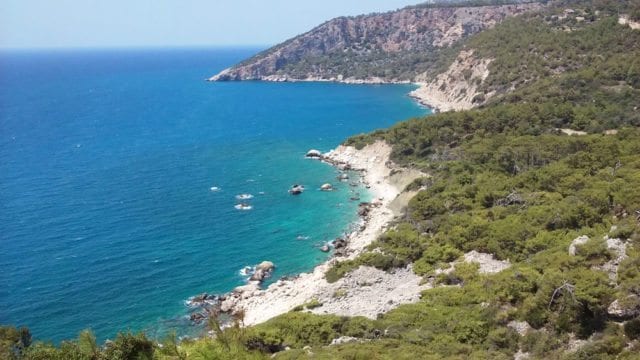

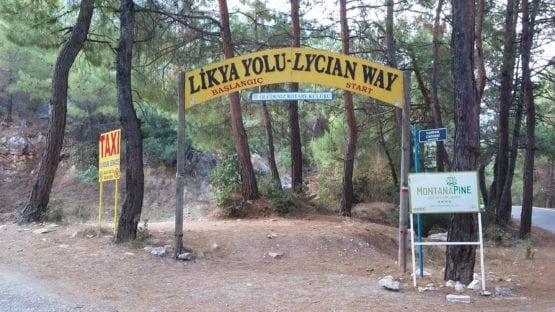
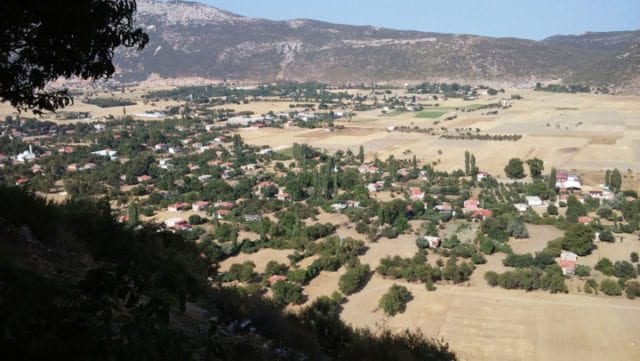 ncounter many travelers on the trail. But, in real life, not everything falls into place as one wishes all the time.
ncounter many travelers on the trail. But, in real life, not everything falls into place as one wishes all the time.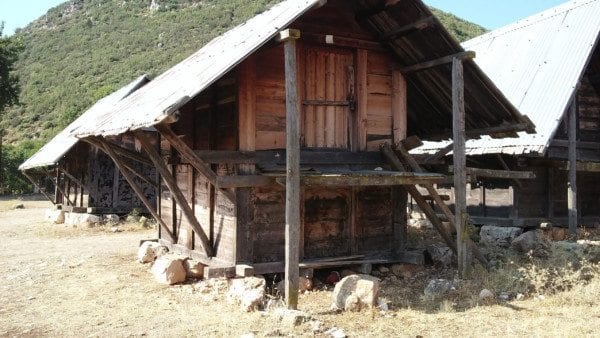 eft to search for it. It is of low to modest difficulty merging with paved vehicle roads on occasion. Low growth bushes and olive groves dot the landscape. There is little shade in this section.
eft to search for it. It is of low to modest difficulty merging with paved vehicle roads on occasion. Low growth bushes and olive groves dot the landscape. There is little shade in this section.

